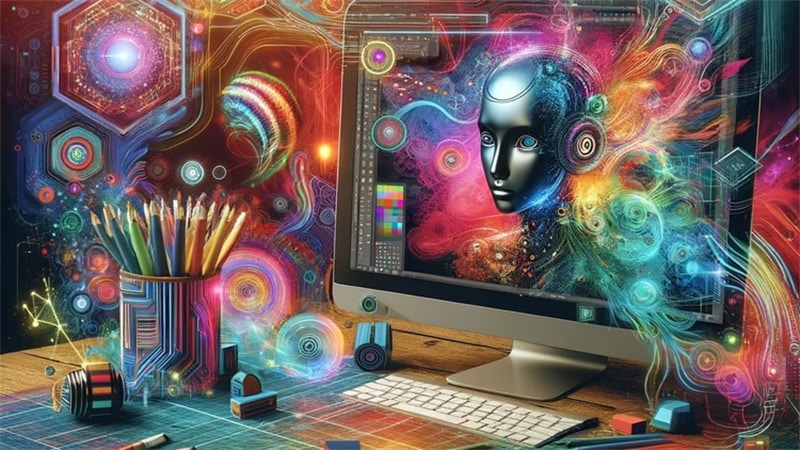In today’s fast-paced world, technology is continuously evolving, and with it comes the fusion of AI and augmented reality (AR). The integration of AI in augmented reality design is reshaping the way we perceive digital content, offering more immersive and interactive experiences than ever before. This article explores the myriad ways in which AI is enhancing AR design, making it a vital tool for digital creators worldwide.

Understanding the Basics of Augmented Reality
Before diving into the impact of AI, it’s essential to understand what augmented reality entails. AR overlays digital information onto the real world, allowing users to interact with both virtual and physical elements simultaneously. This technology is already prevalent in various sectors, including gaming, education, and retail.
The Role of AI in AR Design
The incorporation of AI into AR design significantly enhances its capabilities. AI algorithms facilitate the seamless blending of digital and physical worlds by improving object recognition, depth perception, and interaction with virtual elements. This synergy creates a more engaging and realistic user experience.
Object Recognition
AI enhances AR design by improving object recognition, allowing applications to identify and interact with real-world objects accurately. This capability is crucial for applications like retail, where customers can visualize products in their environment before making a purchase.
Depth Perception
Another critical aspect of AI in AR design is depth perception. AI algorithms can assess the distance and spatial relationship between virtual and real objects, ensuring a seamless integration that enhances the immersive experience.
Interactive Elements
With AI, AR applications can incorporate interactive elements that respond to user inputs and real-world changes. This interaction elevates the user experience by making AR applications more engaging and intuitive.
AI-Powered Tools for AR Design
Several tools leverage AI to aid digital creators in designing AR experiences. These tools simplify complex processes, allowing creators to focus on design and creativity.
AI for Responsive Design
Responsive design is crucial for AR applications that need to adapt to various devices and environments. AI in responsive design ensures that AR content maintains integrity across different platforms.
AI in 3D Modeling
3D modeling is a fundamental component of AR design. AI for 3D modeling streamlines the creation of realistic and detailed models, enhancing the quality of AR applications.
Predicting Design Trends
AI can predict design trends by analyzing vast amounts of data. This capability helps digital creators stay ahead of the curve and design AR experiences that resonate with their audience. Learn more about AI predicting trends.
Challenges and Considerations
While AI offers numerous benefits to AR design, there are challenges to consider. These include the need for continuous data updates, privacy concerns, and the potential for technological dependency.
Data Updates
For AI to remain effective in AR design, it requires continuous data updates. This demand can be challenging for developers but is essential to maintain the accuracy and relevance of AR applications.
Privacy Concerns
As AR applications gather data from users’ environments, privacy becomes a concern. Developers must ensure that data is handled responsibly to protect user privacy.
Technological Dependency
Reliance on AI technology can lead to dependence, which may hinder creativity and innovation. It’s crucial for digital creators to balance AI use with their creative instincts.
The Future of AI in AR Design
The future of AI in augmented reality design is promising. As technology advances, we can expect even more sophisticated and immersive AR experiences that enrich our interactions with the digital world. Learn more about AI’s role in graphic design.
AI for Architectural Visualization
One exciting development is the use of AI in architectural visualization. AI for architecture enhances the design and visualization process, making it easier for architects to showcase their projects in a realistic and engaging manner.
Neural Networks in Design
Neural networks are another area where AI is making a significant impact. These networks can analyze design patterns and suggest improvements, helping digital creators optimize their AR applications. Explore more about the role of neural networks in design.
Conclusion
The integration of AI in augmented reality design is transforming the way we experience the digital world. By enhancing object recognition, depth perception, and interactive elements, AI is making AR applications more immersive and engaging. Despite the challenges, the future of AI in AR design holds immense potential for innovation and creativity. As digital creators, embracing these technologies will be key to crafting the next generation of digital experiences.

FAQs
What is the impact of AI on augmented reality design?
AI enhances augmented reality design by improving object recognition, depth perception, and interactive elements, creating more immersive and engaging experiences.
How does AI improve AR applications?
AI improves AR applications by optimizing object recognition, enhancing depth perception, and incorporating interactive elements that respond to user inputs and real-world changes.
What are some challenges of using AI in AR design?
Challenges include the need for continuous data updates, privacy concerns, and the potential for technological dependency that may hinder creativity and innovation.







